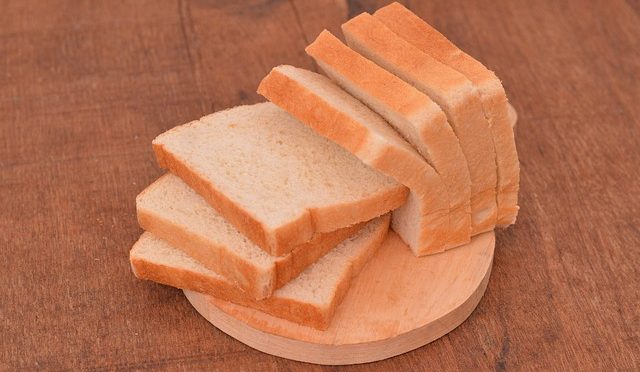3 1/2 c Flour
1/2 ts Sugar
1/2 ts Salt
1/2 ts Baking soda
1 1/4 To
2 1/2 c Sour milk
From: waring@ima.infomail.com (Sam Waring)
Date: Sun, 19 Feb 1995 19:20:52 +0000
Calories per serving: 154 Approx. Cook Time: 1:00
“Sour milk” is milk that has had a couple of teaspoons of buttermilk
stirred into it, has been put in a scalded container and wrapped in a
towel, and left in some peaceful corner at about 75 degrees F for 24 hours.
The original Irish name is *bainne clabhair*, “clabbered milk”, or
“bonnyclabber” as the Scots have anglicized it. The flavor isn’t *quite* as
tart as buttermilk, but there’s enough acid to make the bicarb react
correctly. If you don’t have time to do sour milk, buttermilk will do
perfectly well. Sweet milk doesn’t work as well, and your bread may not
rise correctly: if you’re going to use sweet milk, use baking powder
instead of bicarbonate of soda.
First, decide whether you’re making farl or cake. If farl, find your
heaviest frying pan (cast iron is best) and put it on to preheat at a
low-medium heat. (You’re going to have to experiment with settings. Farl
should take about 20 minutes per side to get a slight toasty brown.) If
making cake, preheat the oven to 450 F and find a baking sheet. Full
preheating is vital for soda bread.
Sift the dry ingredients together several times to make sure the soda is
evenly distributed. Put them in a good big bowl (you want stirring room)
and make a well in the center. Pour about half the buttermilk or sour milk
or whatever in, say about a cup and a quarter, and start stirring. You are
trying to achieve a dough that is raggy and very soft, but the lumps and
rags of it should look dryish and “floury”, while still being extremely
squishy if you poke them. Add more liquid very sparingly if you think you
need it. Blend until the whole mass of dough has become this raggy
consistency.
Then turn the contents of the bowl out immediately onto a lightly floured
board, and start to knead. The chief concern here is speed: the chemical
reaction of the bicarb with the buttermilk started as soon as they met, and
you want to get the bread into the oven while the reaction is still running
on “high”. DON’T OVERKNEAD. You do not want the traditional “smooth,
elastic” ball of dough you would expect with a yeast bread; you simply want
one that contains almost everything that went into the bowl, in one mostly
cohesive lump. You should not spend more than a minute or so kneading…the
less, the better. You *don’t* want to develop the gluten in the flour. If
you do, you’ll get a tough loaf. Once you’re done kneading, shape the
bread. For cake, flatten the lump of dough to a circle about 6-8 inches in
diameter, and put it on the baking sheet. Then use a very sharp knife to
cut a cross right across the circle: the cuts should go about halfway down
through the sides of the circle of dough, so that the loaf will “flower”
properly.
If you’re making farl, flatten the dough ball out to a circle big enough
that the farls are about 3/4 inch thick. Too thick, and they won’t bake
properly. Then use the same very sharp knife to cut the circle of dough
into four wedges. Try not to crush or compress the dough where you cut it
(if the knife is sharp enough, you won’t). Then bake. When putting cake in
the oven, handle it lightly and don’t jar it: the CO2 bubbles are a little
vulnerable at this point of the process. Let it alone, and don’t peek at
it. It should bake for 45 minutes at 450F. If making farl, dust the hot
griddle or frying pan with a little flour, and put the farls in gently. The
cut edges should be 1/2 inch or so apart to allow for expansion. Give the
farls 20 minutes on a side; they should be a sort of mocha-toasty color
before you turn them. Keep an eye on the heat–they scorch easily. The
heat should be quite “slow”. The farls will rise to about twice their
original height. If you’re making cake: At the end of 45 minutes, pick up
the loaf and tap the bottom. A hollow sound means it’s done. For a very
crunchy crust, put on a rack to cool. For a softer crust, wrap the cake in
a clean dishcloth as soon as it comes out of the oven.
REC.FOOD.RECIPES
From rec.food.cooking archives. Downloaded from Glen’s MM Recipe Archive,
Yields
12 Servings
